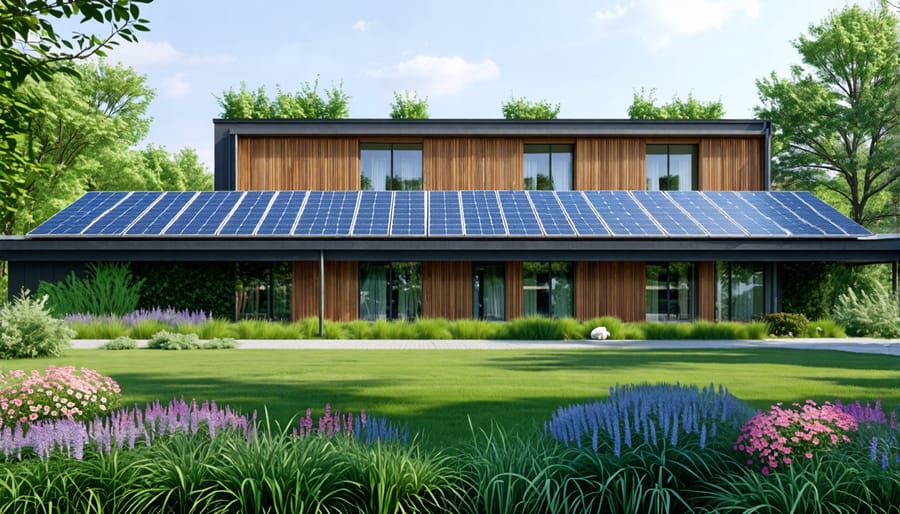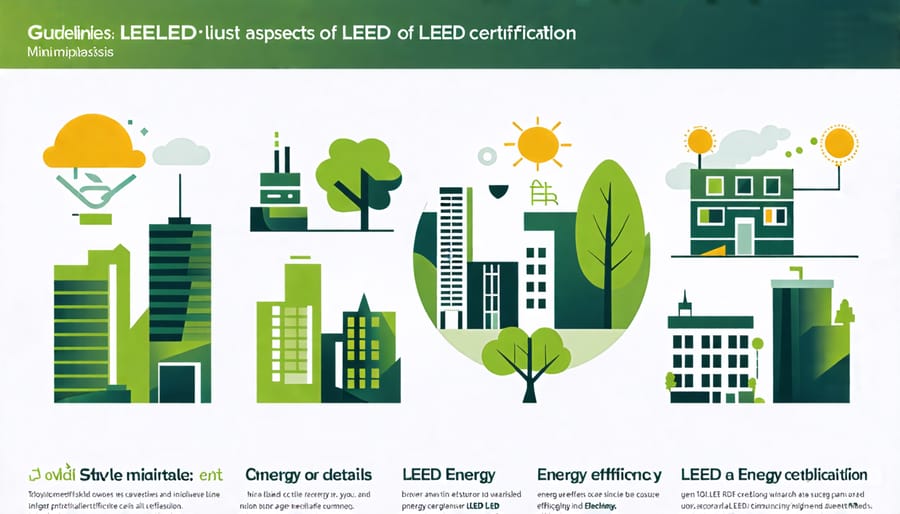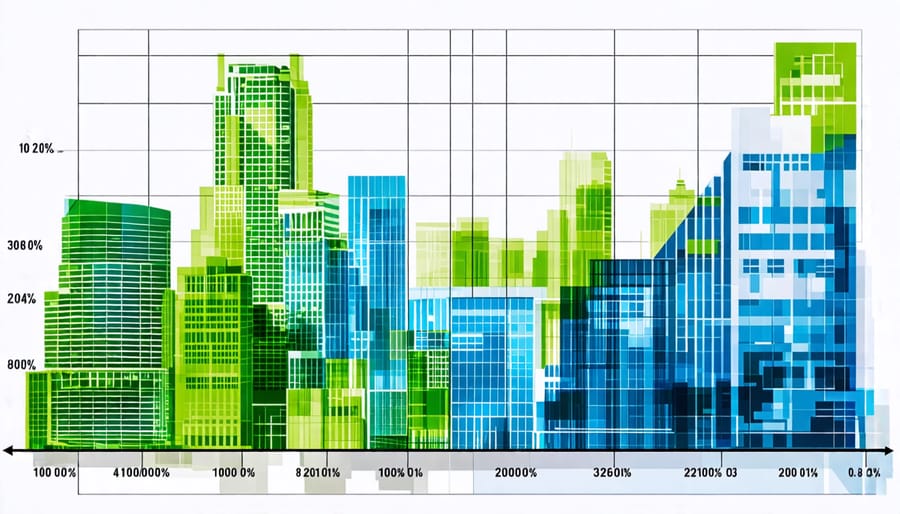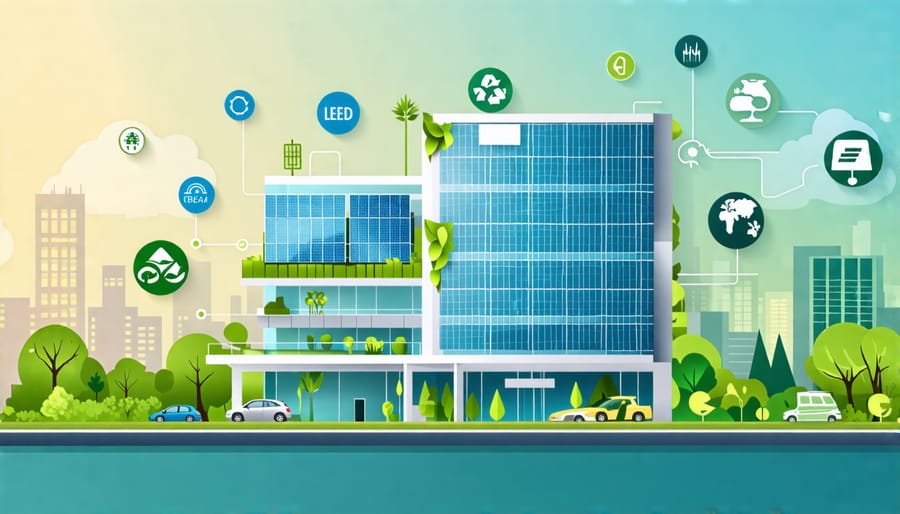Assess local regulations and benchmark requirements for leading certification systems such as LEED, BREEAM, and WELL. Understand the nuances in each system’s evaluation criteria to effectively align your project goals. Integrate energy-efficient systems and renewable resources early in the design phase to maximize your building’s performance and minimize operational costs. Ensure material selection prioritizes innovative sustainable materials that contribute to reduced environmental impact and enhanced indoor air quality. Engage certified professionals to guide your project through the certification process, leveraging their expertise to navigate complex technical requirements and documentation procedures. Keep abreast of evolving standards and updates within the certification frameworks to sustain the green credentials of your building over time.
Understanding the Major Green Building Certification Systems

LEED (Leadership in Energy and Environmental Design)
Leadership in Energy and Environmental Design (LEED) is a globally recognized green building certification system that provides a framework for sustainable building practices. Emphasizing energy efficiency, water conservation, reduced carbon emissions, and improved indoor environmental quality, LEED offers a comprehensive approach to designing and constructing environmentally responsible buildings. With its origins in the United States Green Building Council (USGBC), LEED has expanded its influence worldwide, setting benchmarks for sustainability in diverse climates and cultures.
The LEED certification process is stringent, consisting of a points-based system that assesses various aspects of a building’s design, construction, operation, and maintenance. Projects earn points across several categories, including sustainable sites, energy use, water efficiency, materials and resources, and indoor environmental quality. Depending on the total points achieved, a building can qualify for one of four LEED certification levels: Certified, Silver, Gold, or Platinum. This ensures that the awarded building meets rigorous standards of sustainability and performance, transforming urban landscapes into energy-efficient structures.
LEED’s global influence is further enhanced by its adaptability to different building types and use cases, ranging from commercial offices to residential apartments and even entire neighborhoods. This adaptability has made LEED a preferred choice for many industry professionals, including architects, engineers, and project managers, who are dedicated to sustainable development. As countries strive to combat climate change and reduce carbon footprints, LEED certification plays a crucial role in promoting energy-smart solutions, making it an integral part of the green building movement.

BREEAM (Building Research Establishment Environmental Assessment Method)
Originating in the United Kingdom in 1990, BREEAM (Building Research Establishment Environmental Assessment Method) was the first sustainability assessment method established to gauge the ecological impact of buildings. Over the decades, it has evolved to encompass not only new constructions but also existing buildings and entire communities. BREEAM’s comprehensive framework evaluates a building’s performance across multiple categories, including energy efficiency, health and well-being, pollution reduction, transport, materials, waste management, water consumption, and land use.
Adopting BREEAM involves an initial assessment by a qualified BREEAM assessor to achieve a certification rating that ranges from Pass to Outstanding. The criteria reflect industry best practices, fostering innovations in design and construction while encouraging property owners to adopt measures that reduce carbon footprints and operational costs. Notably, BREEAM certification is recognized internationally, positioning it as a critical benchmark for engineers, architects, and project managers committed to sustainability.
For construction professionals, integrating BREEAM early in the design phase can streamline regulatory compliance, enhance building marketability, and ensure resilience against future environmental standards. Its global applicability across varied climatic and developmental contexts makes BREEAM valuable for international projects, ensuring sustainability goals are met efficiently. Such strategic incorporation of BREEAM not only aligns with green certification requirements but also meets increasing demand for environmentally responsible construction practices.
Core Requirements for Green Building Certification
Energy Efficiency Standards
Energy efficiency standards serve as a cornerstone for green building certification, aiming to significantly reduce energy consumption and enhance overall building performance. Achieving certification requires meeting stringent energy performance metrics that assess various components of a building’s energy systems. These include, but are not limited to, the thermal performance of building envelopes, efficiency of HVAC systems, and performance of lighting systems. Advanced energy modeling technologies are frequently employed to predict a building’s energy usage and identify opportunities for optimization.
Certification standards often revolve around achieving a specific percentage improvement over baseline energy codes, such as the ASHRAE Standard 90.1, which serves as a benchmark for many certification programs. More progressive standards may require the integration of renewable energy sources, like solar panels, or demand-response technologies to lower environmental impact. Real-world case studies highlight buildings that integrate smart energy management systems, achieving reductions in energy usage by 30% or more compared to conventional buildings.
Professionals seeking certification can benefit from resources that provide insights into comprehensive energy-saving strategies. For more detailed information on successful implementation of these energy efficiency standards, further exploration into energy-efficient retrofits is recommended. This holistic approach underscores the importance of energy efficiency in sustainable building practices, ultimately contributing to lower operational costs and reduced greenhouse gas emissions.
Sustainable Site Development
Sustainable site development is a critical component of green building certification, focusing on minimizing the environmental impact of a project’s location and promoting biodiversity and efficiency. Conducting thorough site impact assessments allows construction professionals to evaluate existing ecosystems, water resources, and land use patterns before development. These assessments guide decision-makers in planning and implementing strategies that preserve natural landscapes, manage stormwater effectively, and enhance local biodiversity.
In developing sustainable sites, construction teams are encouraged to integrate natural features into the design, use permeable materials to reduce runoff, and adopt strategies like green roofs and rain gardens, which mitigate heat islands and improve water infiltration. Furthermore, site development should prioritize proximity to public transport and existing infrastructure to reduce transportation emissions. Collaborating with ecologists and local stakeholders can offer valuable insights into sustainable practices that complement the environment, align with certification requirements, and support long-term ecological health. Emphasizing these sustainable site strategies not only bolsters certification efforts but also contributes to resilient and thriving communities.
Water Conservation Techniques
Implementing effective water conservation techniques is crucial for achieving green building certification, as it directly impacts resource efficiency and sustainability. Construction professionals should consider strategies that optimize water usage without compromising performance. Key techniques include installing low-flow fixtures and aerators, which can significantly reduce water consumption in both residential and commercial settings. Incorporating dual-flush toilets and water-efficient showerheads can also contribute to substantial savings. Advanced irrigation systems, such as drip irrigation or smart controllers, are essential for minimizing water waste in landscaping. Furthermore, utilizing greywater systems and rainwater harvesting can enhance water reuse, providing a sustainable solution for non-potable applications. These strategies not only decrease the overall water demand but also help projects meet stringent certification criteria, ultimately leading to cost savings and improved environmental impact. By integrating these techniques, architects and engineers can create buildings that are not only environmentally responsible but also financially viable, aligning with the overarching goals of green building certifications.
Benefits of Green Building Certification for Industry Professionals
Market Differentiation and Economic Impact
Achieving green building certification sets a project apart in a rapidly evolving construction market driven by increasing environmental awareness. Certified buildings often command a higher market value, appealing to tenants and investors interested in sustainability and reduced operational costs. Economically, these structures benefit from lower energy and water usage, translating to significant long-term savings. Furthermore, green building certifications can open doors to governmental incentives, such as tax rebates and grants, further enhancing financial viability. With sustainability becoming a central discussion point in the construction industry, certified projects are well-placed to meet evolving regulatory demands and consumer preferences. This growth in green-certified buildings can also boost the construction sector, providing new sustainability careers and fostering innovation in design and materials. In a competitive marketplace, the economic impact of certification extends beyond the building’s lifecycle, offering a compelling case for sustainability-minded investment and development.

Environmental and Social Responsibility
Green building certifications play a pivotal role in advancing environmental stewardship and social responsibility within the construction industry. These certifications, such as LEED, BREEAM, and Green Star, provide a framework that encourages sustainable construction practices by setting ambitious standards for energy efficiency, resource management, and minimal environmental impact. By adhering to these criteria, construction projects not only reduce their carbon footprint but also promote healthier living and working environments, thereby enhancing community well-being and social equity. Additionally, green certifications encourage industry innovators, from architects to engineers, to integrate cutting-edge, sustainable technologies and materials into their designs, fostering a culture of environmental accountability. The pursuit of certification incentivizes stakeholders to address social aspects like indoor environmental quality and community integration, ensuring projects contribute positively to society. Ultimately, green building certifications drive the construction industry towards long-term ecological balance and social responsibility, aligning commercial success with public good.
Challenges and Considerations
Attaining green building certifications presents a multitude of challenges that industry professionals must navigate carefully. One significant obstacle is the initial cost. While the long-term savings and benefits of a sustainable building often outweigh initial expenses, up-front costs for materials, technology, and certification processes can be substantial. This requires careful budget planning and securing adequate funding or incentives.
Technical expertise plays another critical role, as not all teams may be familiar with the intricacies of sustainable design and construction. Overcoming this involves investing in training and possibly engaging consultants or experts to guide the project to meet stringent certification requirements.
Time constraints also pose a frequent challenge. Projects aiming for green certification often encounter extended timelines due to the meticulous documentation and verification processes required by certifying bodies. This necessitates strategic scheduling to avoid project delays.
Long-term sustainability considerations include maintaining the performance of the building post-certification. This can involve regular assessments, upgrades, and adjustments to operational strategies to ensure the building continues to meet sustainability standards as technologies and standards evolve.
In summary, while these challenges are considerable, they are surmountable with strategic planning, stakeholder engagement, and an unwavering commitment to sustainable building practices. By addressing these challenges, construction professionals can lead the transition to more sustainable built environments, reaping both environmental and economic benefits.
Conclusion
As the construction industry moves toward a more sustainable future, embracing green building certifications becomes increasingly essential. These certifications not only demonstrate a commitment to reducing environmental impact but also offer substantial benefits such as improved building performance, increased property value, and enhanced occupant health and well-being. Furthermore, they provide a framework for innovation and energy efficiency that is crucial for addressing global challenges like climate change. As construction professionals and decision-makers strive to meet these evolving standards, it’s imperative to stay informed about the latest developments and techniques in sustainable construction practices. Expert interviews and in-depth case studies reveal that adopting green certifications is not just a regulatory necessity but a strategic advantage that can lead to long-term savings and competitive differentiation in the marketplace.
In looking to the future, we can expect the landscape of sustainable construction to continue evolving with advancements in technology and policy. The integration of smart building technologies, renewable energy systems, and sustainable materials will redefine industry norms and expectations. Construction professionals must be proactive in adopting and adapting to these changes, ensuring that they not only meet current demands but also anticipate future trends. By doing so, they will be well-equipped to drive the industry forward, fostering a built environment that is both ecologically responsible and economically viable, thereby setting a new standard for excellence in sustainable development.

